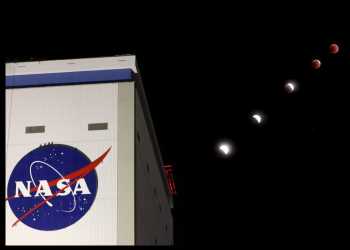Total Lunar Eclipse On Nov. 8; Last Chance To See The Phenomenon Until 2025
For the second time this year, stargazers will have the opportunity to view a total lunar eclipse next week.
The total lunar eclipse, which will occurr on November 8, will be the last chance to see such a phenomenon until 2025, according to NASA.
At least a portion of the lunar eclipse will be visible throughout eastern Asia, Australia, the Pacific, and North America.
Total lunar eclipses occur approximately once every 1.5 years on average. However, the next total lunar eclipse will not occur until 2025, says Alphonse Sterling, astrophysicist from NASA’s Marshall Space Flight Center in Huntsville.
The previous total lunar eclipse occurred in May.
A total lunar eclipse occurs when Earth casts a complete shadow called an umbra over the Moon. Earth’s shadow is categorized into two parts: the umbra, the innermost part of the shadow where direct light from the Sun is completely blocked, and the penumbra, the outermost part of the shadow where the light is partially blocked.
During a total lunar eclipse, the Moon and the Sun are on opposite sides of Earth. Many people wonder why lunar eclipses don’t happen every month given the Moon completes an orbit around Earth every 27 days. The reason is because the Moon’s orbit around Earth is tilted relative to Earth’s orbit around the Sun, so the Moon often passes above or below Earth’s shadow. Lunar eclipses are only possible when the orbits align so that the Moon is directly behind Earth relative to the Sun.
For North America the action will start in the early hours of the morning on Tuesday, NASA said. The partial eclipse will begin at 3:09 a.m. CST, with totality beginning at 4:16 a.m. and ending at 5:42 a.m. Then, the partial phase will resume, lasting until 6:49 a.m. Those in the eastern part of the United States will miss most or all of the last partial phase because the Moon will set during totality or shortly after totality ends.
Another feature of a total lunar eclipse is the Moon’s red hue during totality.
No special eye protection is needed for viewing a lunar eclipse, unlike solar eclipses, which occur during the daytime. While the lunar eclipse can be observed with the unaided eye, a pair of binoculars or a telescope can enhance the view.
Source: Read Full Article

